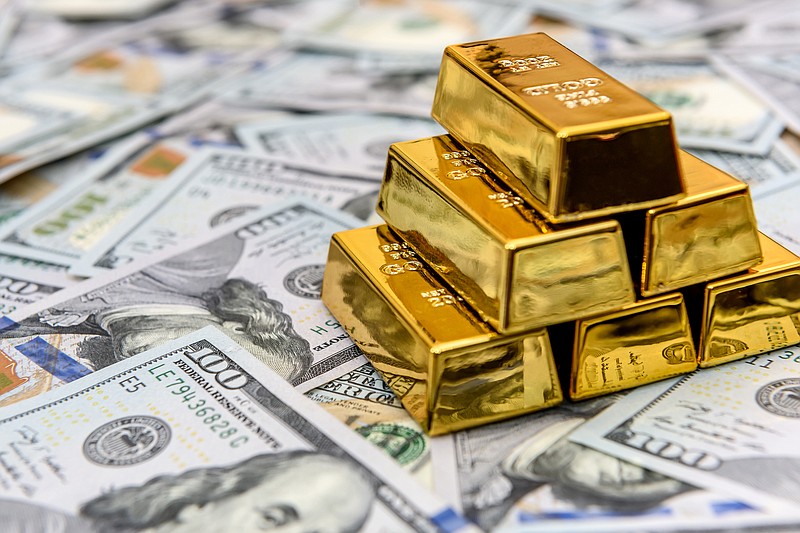The price of gold has been on a tear this year, reaching new all-time highs despite the economic damage to the world economy from the pandemic. The shiny metal climbed above $2,000 per ounce last week as some analysts predict another $1,000 rally ahead.
The proximate justification seems to be fear of potential inflation due to the massive monetary and fiscal stimulus, compounded by the declining value of the dollar. Investors have long viewed gold as a hedge against inflation and a haven from uncertainty. Problem is, it just ain't so.
When many people think about gold, they often consider it as an investment asset. In fact, the majority of the gold in existence above ground is used for jewelry and in industrial applications, or held in reserve by the world's central banks. As of 2019, only 22% of the stuff actually was held by private investors in the form of bars, coins or ETF funds. So far in 2020, demand for jewelry has cratered by 46% compared with the previous year, while industrial consumption and physical bars and coins also slumped. On balance, total global gold demand dropped by 11%, while the price of gold soared 17% higher for the first 6 months of 2020. What gives?
In a word: ETFs. Despite the sharp decline in essential demand for gold, individual investors have rushed to buy it in the form of pooled investment vehicles known as Exchange Traded Funds or ETFs that hold the metal but allow individual investors to purchase a security that represents a share of the pool. Global cash flows into gold ETFs have been astonishing so far in 2020: almost $50 billion, a 21% jump from last year's first half. Of that increase, the United States made up 64%.
Like all asset bubbles, this one is being observed with growing alarm. While most of the newcomers to gold ETFs are likely justifying their moves based upon fear of inflation and a sense of uncertainty, the fact is that gold has been a terrible hedge and investors who came late to the party have historically had their heads handed to them.
The last two periods of record gold prices were in 1980 and 2011. In 1980, inflation was high (around 9%), and gold investors sought to protect against erosion of purchasing power. By 1985, inflation was coming down and gold had cratered 55%, and ultimately fell from $850 to $250 by 2000. In 2011, although inflation was benign, investors expected significant price increases going forward and plowed into gold. Five years later, the metal was down 28%. During that same period, the S&P 500 doubled.
If gold was truly an effective hedge against inflation, one would by definition expect that the "real" value after adjusting for price inflation would be relatively stable. In fact, the inflation-adjusted price of gold has been nearly as volatile as the nominal or quoted price. For example, inflation in the U.S. has been fairly steady at around 2.5% since 1990, but the real price of gold has gyrated wildly between $360 and $2,050 during that time in current dollars. As a true hedge, one would be hard pressed to find a worse one, with the possible exception of Beanie Babies.
Much of the recent surge in price can be attributed to the rise in popularity of gold ETFs. Gold ownership became easier and cheaper with the ability to buy funds just like one would buy a stock. Recent research has highlighted the strong correlation between flows from "passive" ETF investors and the price of the commodity, notwithstanding variations in non-investment demand. Fundamental forces of supply and demand are on display, with thousands of new players coming to the market without regard to price. The down side of this picture is the rapidity with which these latecomers can exit the market en masse. When they do, look out below.
Many gold buyers believe it to be a shelter in a storm. Historically, it hasn't been. However, one certainty still obtains: bouts of extremely high prices are followed by periods of low real returns. Buy high, sell low. With the price of gold at an all-time high, the gloss seems a bit tarnished.
Christopher A. Hopkins, CFA, is a vice president and portfolio manager for Barnett & Co. in Chattanooga
